
"Meditation is a precise technique for resting the mind and attaining a state of consciousness that is totally different from the normal waking state. It is the means for fathoming all the levels of ourselves and finally experiencing the center of consciousness within. Meditation is not a part of any religion; it is a science, which means that the process of meditation follows a particular order, has definite principles, and produces results that can be verified."
"In meditation, the mind is clear, relaxed, and inwardly focused. When you meditate, you are fully awake and alert, but your mind is not focused on the external world or on the events taking place around you. Meditation requires an inner state that is still and one-pointed so that the mind becomes silent. When the mind is silent and no longer distracts you, meditation deepens."
"Meditation is a practical means for calming yourself, for letting go of your biases and seeing what is, openly and clearly. It is a way of training the mind so that you are not distracted and caught up in its endless churning. Meditation teaches you to systematically explore your inner dimensions. It is a system of commitment, not commandment. You are committing to yourself, to your path, and to the goal of knowing yourself. But at the same time, learning to be calm and still should not become a ceremony or religious ritual; it is a universal requirement of the human body."
During most of our waking life our minds are engaged in a continuous internal dialogue in which the meaning and emotional associations of one thought trigger the next. We hear a snippet of music and suddenly we’re thinking about the first time we heard that song with an old boyfriend or girlfriend and how that relationship ended. If we’re still holding emotional pain over that ending, those feelings may bubble up and then our mind may veer into criticism, self-pity, or worries about the future. All day long our mind spins stories about our work, our health, our finances, our family, or that funny look the store clerk gave us. Often we’re not even conscious of the internal soundtrack unspooling in our mind and yet it is the greatest source of stress in our lives. Although the mind is capable of creating life-affirming stories, it has what neuroscientists refer to as a negativity bias, a tendency to pay more attention to negative experiences than to positive ones. The negativity bias evolved as a survival instinct millions of years ago, as our ancestors focused much more attention on avoiding potential threats than on rewards. Stopping to savor a delicious meal or admire a Paleolithic sunset would have used valuable attentional resources, leaving our ancient ancestors more vulnerable to attack by a predator. Those who survived to pass on their genes paid a lot of attention to danger. Their legacy is a brain that is primed to focus on negative experiences and has a tendency to get stuck in conditioned patterns of thinking, returning again and again to thoughts of anxiety, depression, and limitation.
Studies have conducted that meditation can bring about a healthy state of relaxation by causing a generalized reduction in multiple physiological and biochemical makers. Research conducted revealed that during meditation, the body gains a state of profound rest. At the same time, the brain and mind become more alert, indicating a state of restful alertness.
During meditation, blood pressure stayed at 'low levels', but fell markedly in persons starting meditation with abnormally high levels. Meditation reduces activity in the nervous system predominates. This is the branch responsible calming us. During anxiety and tension states there is a rise in the levels of lactate in the blood. Lactate is a substance produced by metabolism in the skeletal muscles.
Meditation produces a complex of responses that marks a highly relaxed state. The pattern of changes they observed in meditators suggested an integrated response meditated by central nervous system. In addition, by quieting the mind, meditation can also put in touch with the inner physician, allowing the body's own inner wisdom to be heard.

Urja Meditation or Dynamic Meditation is based on ancient methodology of a special breathing technique called Kapalbhati which involves strong and forceful exhalations. This process brings about catharsis which cleanses the inner recesses of the mind - and then mindfulness becomes easy. This exercise can give excellent results if done with conviction. You will glide into a state where mind will be totally at peace, relaxed, energized. Layers upon layers will get clearer and once all these are cleared and there is emptiness, then there will come this bright light of consciousness.
Meditation is not meditating upon something but just being with oneself. There is no movement, no flickering - only being fully in the moment, in the NOW! When a person meditates, he loses all restlessness, his thinking stops and in that moment, he is a pool of energy. He becomes tremendously powerful.
The word meditation itself scares people. They think that it is something that is done by ascetics and monks only. But meditation is bathing the mind, it is unloading of pain, stress and confusions. And this is needed by one and all, whether you are an atheist or not.
Watch the mind patiently, watch the rattling of thoughts and be unattached to them, be unattached to the mind. Then awareness will dawn upon that you are not mind, you are not the body, you are not intellect. This understanding will not be an imaginative, philosophical statement, but an experience. This will be the beginning of a revolution in you. Normally, mind functions like a rock and keeps you pinned down. Awareness gives you freedom from this slavery of the mind.
The moment you know you are not mind, you enter the Buddhafield. Entering the Buddhafield means entering into the world of levitation. All pains, all turmoil and agitations of the mind will vanish. Transcending the mind and body gives you existential understanding that you are beyond life and death, beyond worldliness, you are pure bliss - Ananda.
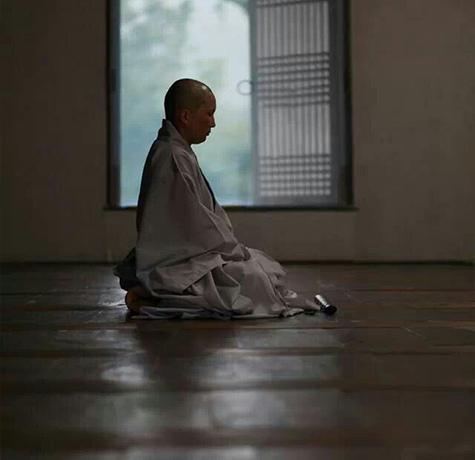
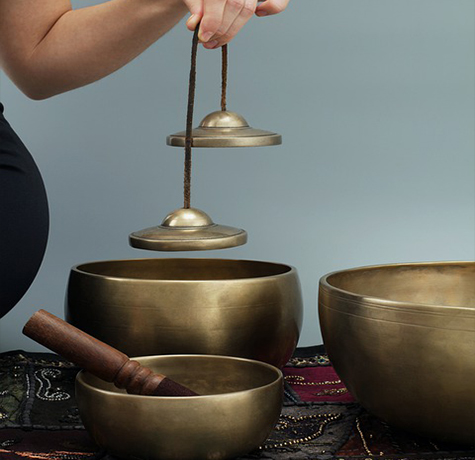
Singing Meditation is a wonderful tool. Through this you get released and move to silence. All that you have to do is gaze into the sky for ten to fifteen minutes. Then start singing la..la...la...forget everything, just sing la..la..la.. Soon it will begin to change its color; sounds may change into words, even foreign words. Keep it up for twenty minutes. Bring out everything from inside, all the repressed thoughts. Let the sky be the witness. And at the end lie down on the ground and be silent. You will experience a deep silence. Lesser and lesser thoughts will come to your mind. This is an excellent method to release all pressure.
Sacred space Meditation is a delicate and sensitive technique in which the focus is on listening. You listen to the sound waves; listen to the pauses in between two sounds. Gradually, as our attention rises, a wonderful experience happens of deep relaxation and higher awareness. As the technique is subtle and deep, one should be very alert.

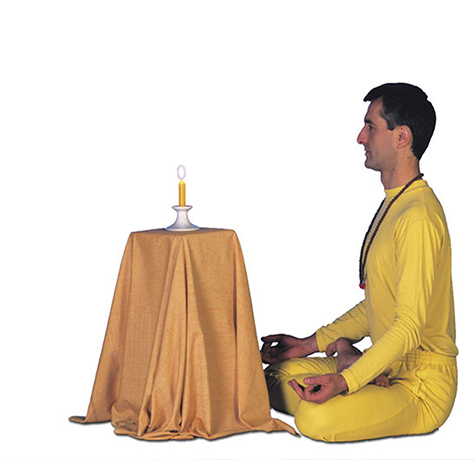
Our mind is always occupied with the incessant flow of thoughts. It is always in a state of disturbance, and has a habitual tendency for distraction. This leaves us feeling so much fragmented that we find ourselves scattered in all directions. It is no exaggeration then, to say that our mind cannot stay still for longer than a few moments, which eventually results in lack of concentration and loss of memory. We are unable to grasp and focus in the present moment.
Now, how do we enhance our power of concentration and strengthen our memory? A unique meditation technique called Tratak is an answer to this. It has many benefits.Tratak not only brings an end to the mind’s distractions but also enhances the ability to concentrate. It increases the power of memory and brings the mind in a state of awareness, attention and focus.Tratak is an ideal meditation technique for people of all age groups, especially for students who need to concentrate on studies. Older people who often tend to forget every now and then can greatly benefit from this technique.
As a result of its continuous practice, you will witness an immense rise in your confidence level, stability in your thoughts, and an ability to focus on whatever task you undertake.
We believe and we know that God is here, right here, right now, in you, in all of us. This very body is a divine temple. Revere it, worship it, love it. It is the shrine of God. Scriptures and holy men have always talked about dissolving any I-ness, and My-ness with the body. We are told that our body is a bag of filth and that we are not body - so we hate it. This is wrong. This is not the way to treat our body. Our body is not ours. It is a vehicle given to us by God. So, how can we hate it? We should not have a relationship of repulsion or attachment with our body, but a relationship of love.
This beautiful tantric meditation teaches us this. Learn to detach from the body with love. See it in a different light. Once you are able to see it as a Temple of God, the holiest of holy, our mind desists from using our body for carnal pleasures. This body is a divine vehicle to bring love, peace and wisdom to this world.
Enjoy being in the body. It is a blessing, a grace. Once we realize this, we will develop great love and respect for others, even for birds and animals.Be a truly loving, non-violent and meditative person.

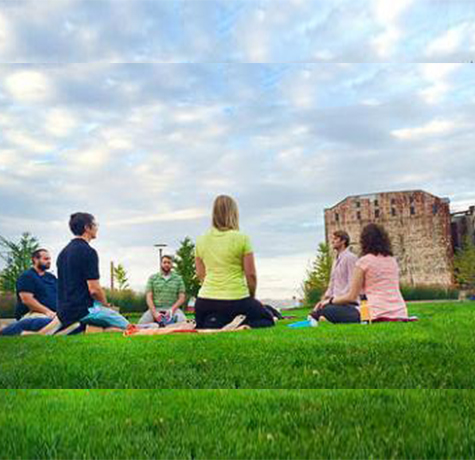
For Pause Meditation, sit in zazen meditation first. In this way, one can focus better, train the mind in a better way. When we sit in a quiet corner, with eyes closed and resolve to meditate, then we have created the right ambience for meditation.
And taking small pauses while we are working gives us the chance to break the monotony, break the robotic patterns which we have cultivated for so long. Say, you are walking, writing, cooking, dancing, attending to office work or helping the child in his school project or study. Suddenly, take a break. Stop. Take a pause.
If possible, exhale deeply and hold the breathing activity for as long as you are comfortable. Look inwards, see, feel your body, observe your breath, look at your mind. Be a witness to all this that is happening. Then return to what you were doing.
These pauses will go a long way in raising your level of awareness. Remember, you must do it with zeal and enthusiasm. Remember, these pauses are pregnant with possibilities and will take you closer to enlightenment.
Walking Meditation involves watching step after step, being aware of the movement of the body as the arms move back and forth, jiggle in the thighs and buns, the gentleness and the grace of the human body. Being witness to this flow, this magical dance of the body movement leads to an openness that comes from within.
The master has taught us this fascinating way of walking and unlearning the unconscious way we walk. This technique brings forth the beauty of wakefulness in the movement that we would always be doing, that is, walking.
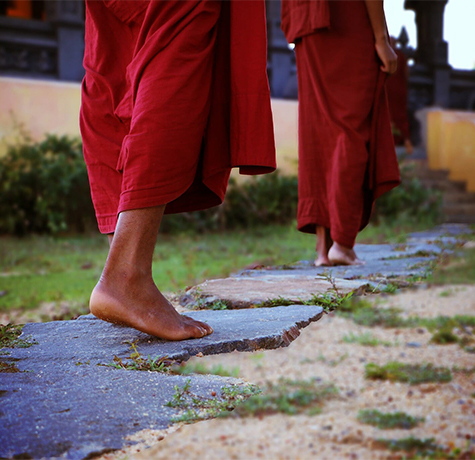

We have forgotten the natural dance; but every blade of grass is dancing, trees are swaying with the wind and the child moving his legs and arms in his cot is dancing – rejoicing on his attaining freedom from his mother’s womb! Dance as a spiritual practice has always been used by the mystics. In India, dance evolved happened From Lord Shiva Himself. His along with His consort laid down the science of dancing. From poses (mudras) to taal (rhythm), various compositions were made by this dynamic duo. We have this great legacy of temple dance to dance of devotees who simply follow the beat of their hearts and just move about because energies are moving in them. A child-like innocence is required to explore this method of meditation. Dance can be vulgar and cheap but it can also be divine. So, it is not which kind of dance you do, but how you do it.
Well, man has become so methodical that even for dance, a method is required which can open up the knots, relax the person totally and allow him to melt into the dance. And then a stage comes when there is no dancer - only the dance!
Chanting (Jap) is the incessant repetition of a syllable or a specific set of words known as mantra in Sanskrit. Each word is built on tones and has its own sound vibration. In chanting, the repetition of words is not the objective, though most of the religious people think it is. When a word is spoken, sung or whispered, it affects the listeners. Sound is a form of energy.
In chanting meditation, we use a word or a set of words which at first are chanted aloud and then gently as we move deeper and deeper into silence and allow the mantra to resonate on its own. But the purpose of chanting is not to become a living tape, but to move from words to silence to wordlessness. This progress from words to silence results in calmness and peace that make us transcend the time zone. Chanting is also used for invocation of deities in Tantra, and in the path of devotion.
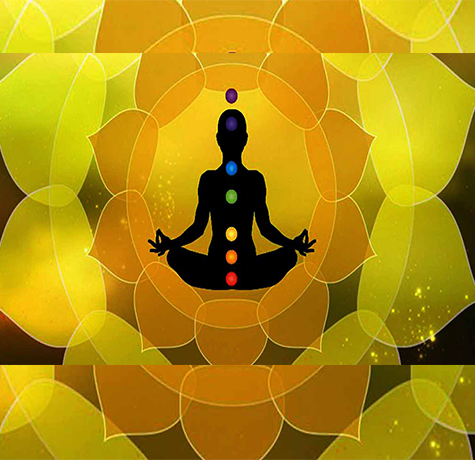
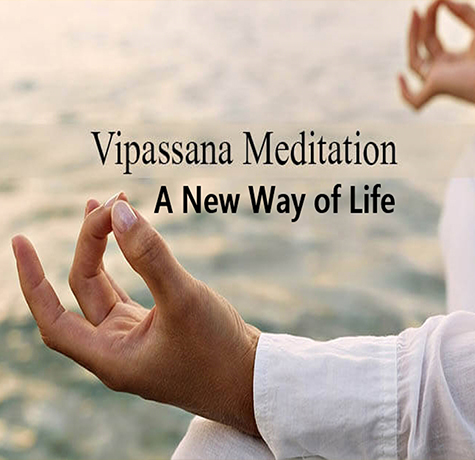
Vipassana Meditation is a way of self-transformation through self-observation. It focuses on the deep interconnection between mind and body, which can be experienced directly by disciplined attention to the physical sensations that form the life of the body. Through this practice, the life of the mind is conditioned. It is this observation based, self-exploratory journey to the common root of the mind and body that dissolves the mental impurities, resulting in a balanced mind, full of love and Compassion. Vipassana is also called Anapansati Yoga, i.e. the science of watching the breath.
Meditation is not about doing something, rather it is all about doing nothing, just being in silence experiencing sheer emptiness and enjoying it. But enjoyment too is a mind oriented experience. Both joy and sorrow are experienced by mind, and anything done and experienced by mind falls out of the category of meditation.
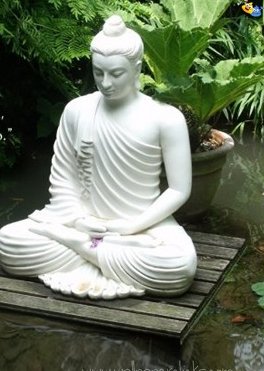
Meditation is sometimes quite misunderstood and does not usually fit the bill as sometimes people perceive it to be.
Contemplation involves thinking about a concept, engaging your mind in enquiring about a certain idea. But when you meditate, you don't ask the mind to think about a concept, but go beyond thought.
Contemplation involves thinking about a concept, engaging your mind in enquiring about a certain idea. But when you meditate, you don't ask the mind to think about a concept, but go beyond thought.In hypnosis, a suggestion is made to the mind, there is an attempt to programme, manipulate or control the content of the mind. But when you meditate, you simply observe the mind and let it become quite and calm, exploring and experiencing the deeper levels of your being.
Meditation does not belong to any culture or religion. It is a simple method of exploring the inner dimensions of life. Some religions employ meditative practices as part of their rituals, meditation itself is far removed from any set of beliefs or the distinctions of class or creeds.